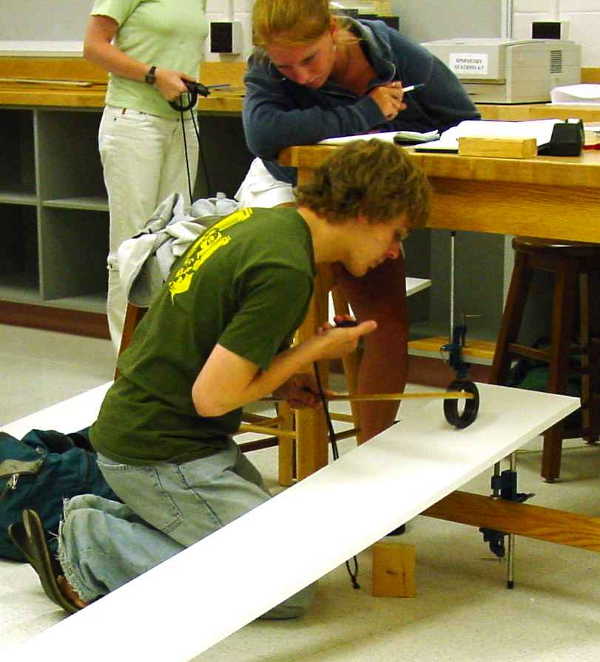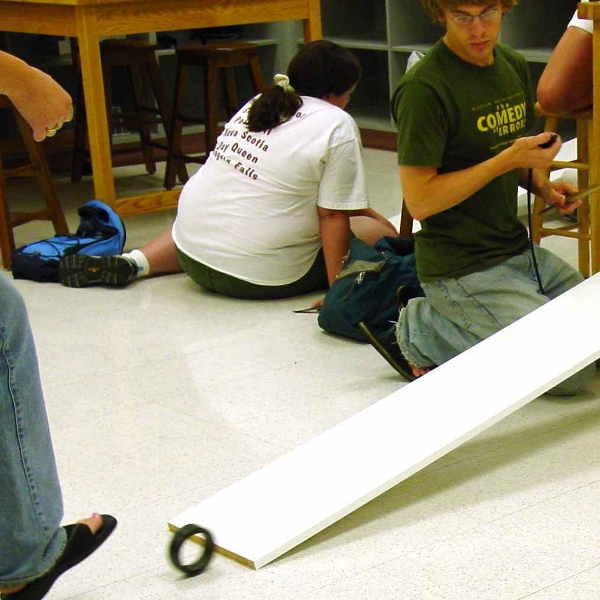Experiment of The Month
Conservation of Energy for Rolling Hoops
Our labs do not have written instructions. In keeping with this spirit, the description given here will be brief and general. The intent is that each performance of the lab will be unique; in each nature will reveal a slightly different face to the observer.
Conservation of energy tells us that the speed of a falling object increases as the square root of the distance fallen. In other words, the square of the final speed is proportional to the distance fallen.
When the object is a hoop, rolling instead of falling, the kinetic energy contains two terms: (1/2)mv2 for the center of mass motion and (1/2) I (v/R)2 for the rotational motion, assuming rolling without slipping. in the second contribution, v is still the center of mass velocity, I is the moment of inertia, and R is the outer radius of the hoop.
For a thin hoop rolling downhill, conservation of energy tells us that the moment of inertia is simply mR2 and the final velocity is given by
v2 = g h
For the real, thick, hoops used in the photographs, g is replaced by
(2g)/(1+.78)
where the .78 would become 1 for an ideal thin hoop.
Dr. Nolan reports:
I had the students measure the time it took for a hoop to roll down the ramps, each ramp at a different height off the floor (h=10,20,30,40,50 cm).
They get the final speed of the hoop from the average velocity formula for constant acceleration (v=2L/t) where L is the length of the ramp.
Then they graph speed squared versus h and compare their slope and intercept to the predicted values.
This worked quite well, although some care is necessary in the timing of the hoop and the measuring of the height.

